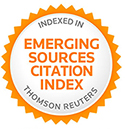Modelo para controlar la incertidumbre en logística inversa
Resumen
Vivimos tiempos de incertidumbre en todos los campos de las ciencias administrativas, portanto, la producción y más concretamente la logística hacia adelante o inversa no escapa a estarealidad. El objetivo de este trabajo es investigar el problema de la incertidumbre en una organizaciónal implementar un programa de la logística inversa en cuanto a la calidad y cantidad delos productos devueltos. El problema se analiza concretamente en las fases iniciales de la logísticainversa: recogida, inspección, clasificación y desensamblado de los productos retornados. Paratratar este problema se conjugaron varias herramientas: la teoría de las restricciones, el sistemade información de la empresa (MIS, por sus siglas en inglés), la administración de las relacionescon los clientes (CRM, por sus siglas en inglés), el internet y la intranet. Se observa una mayorincidencia de los modelos cualitativos en la solución del problema. En la última parte del estudiose presenta el método heurístico utilizado aplicado a un ejemplo ilustrativo. La principal conclusiónes que el problema de la incertidumbre en logística inversa debe ser abordado integralmenteporque al utilizar un solo método de solución, cuantitativo o cualitativo, se corre el riesgo desuboptimizar las posibles soluciones al problema.
Abstract
Model Uncertainty to Control Reverse Logistics
We live in times of uncertainty in all areas of management science, therefore, productionand more specifically the forward or reverse logistics is no exception to this reality. The aimof this work is to investigate the problem of uncertainty in an organization to implement areverse logistics program in terms of quality and quantity of returned products. The problemis discussed specifically in the initial upstream or reverse logistics: collecting, inspecting,sorting and disassembly of returned products. To address this problem we have combinedseveral tools: the theory of constraints, the system of management information system (MIS),the customer relationships management (CRM), the internet and intranet. There is a higherincidence of qualitative models in solving the problem. The last part of the paper presentsthe heuristic method used, applied to an illustrative example. The main conclusion is thatthe problem of uncertainty in reverse logistics must be addressed integrally because usinga single solution method, quantitative or qualitative, there is a risk of not optimize possiblesolutions to the problem.
Palabras clave
Texto completo:
PDFP-ISSN 1317-8822 E-ISSN 2477-9547
DOI: https://doi.org/10.53766/VIGEREN
Twitter: @VisionGerenci
Facebook: Visiongeren
Instagram: @visiongerenci
![]()
Todos los documentos publicados en esta revista se distribuyen bajo una
Licencia Creative Commons Atribución -No Comercial- Compartir Igual 4.0 Internacional.
Por lo que el envío, procesamiento y publicación de artículos en la revista es totalmente gratuito.
 |  |  | |
 |  |  |  |
 |  | | |
| | |||
